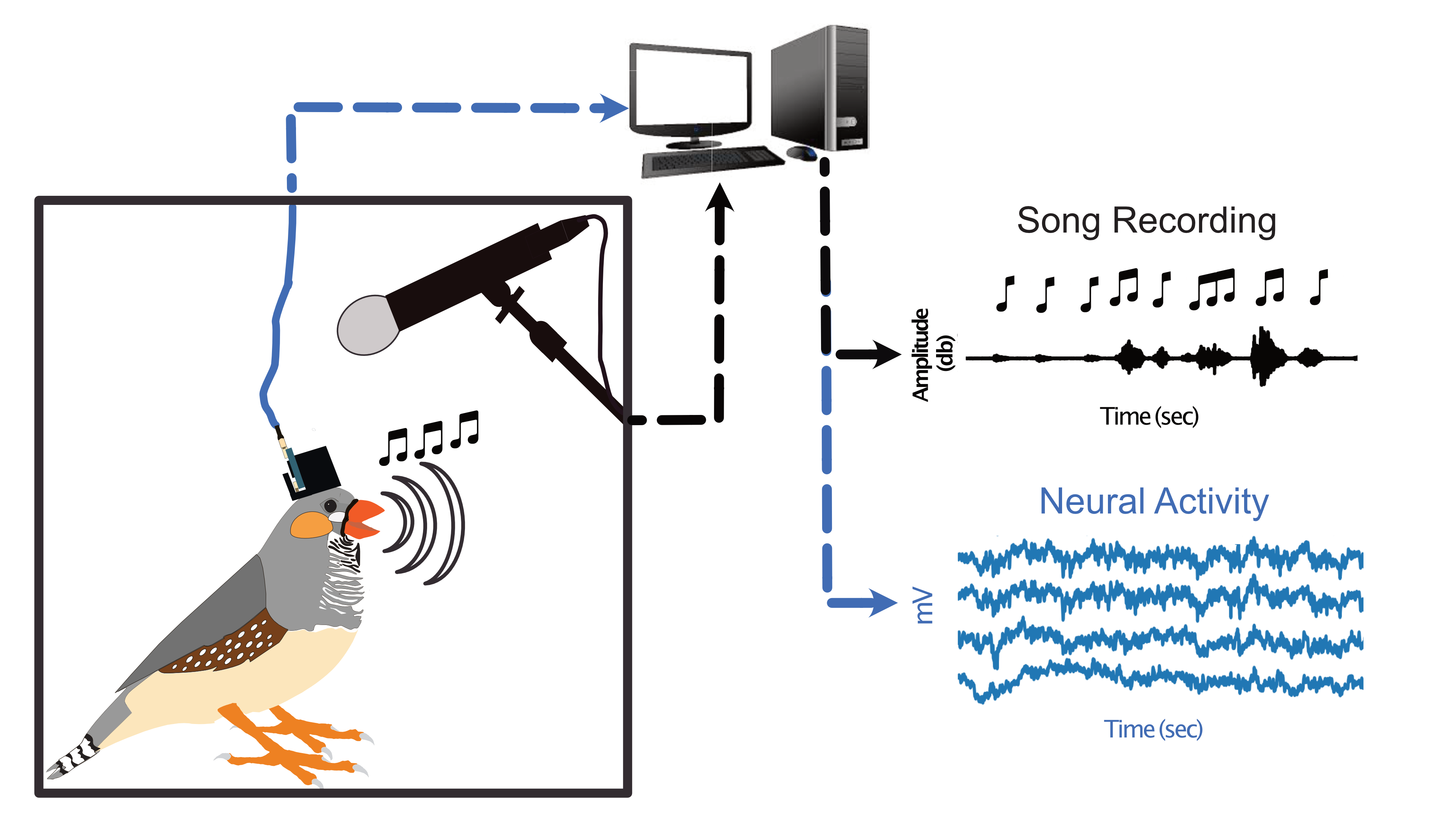Research
The Quick Version

I put electrodes into bird’s brains so that we can try to understand how they sing. I aim to help develop a system that takes in neural signals and produces their intended song. Why birds? Well they learn how to sing from their parents similar to how we learn to speak from ours. In fact we have learned a lot about how we learn to speak by studying them. I hope this system may give insights into how to develop a similar one for people who, through injury or disease, have lost their ability to speak.
In-Depth Version
Speech is a complex motor sequence that requires dynamic coordination of the articulator muscles of the vocal tract. The loss of the ability to speak whether from stroke, traumatic brain injury or other neurological disorders, can significantly reduce the quality of life of an individual. Recent work has demonstrated a preliminary proof-of-concept Speech-Synthesis Brain-Machine Interface (BMI) in Humans. However, this work has several limitations that impede clinical viability. At present, recording large datasets in humans remains difficult and the community lacks an translatable animal model to supplement the study of speech production. My thesis research aims to help fill this gap in the field by establishing songbirds as an animal model for a human speech prosthesis.
I have found informative features extracted from neural activity recorded by collaborators using chronic depth electrodes implanted in the premotor nucleus HVC (used as a proper name) of awake free behaving zebra finches. Zebra Finch, and songbirds as a whole, are already used to study vocal learning and their premotor nuclei are homologous to human motor cortex with respect to function and gene transcription. In a study presented at the 2018 Society for Neuroscience Meeting, I detailed novel Local Field Potentials (LFP) signatures that are predictive of syllable onset. LFP signals carry information regarding both local and presynaptic neural activity and can be reliably recorded over long time scales, making it ideal for practical vocal prostheses. Furthermore, spectral decomposition of the HVC LFP revealed similar spectral characteristics to LFP in human motor cortex. This work, currently under review, will enrich the literature connecting human and avian vocal production.
This work has been covered in multiple news outlets including Psychology Today and ScienMag (Science Magazine).
Most Recently this work was featured on SciShow!
